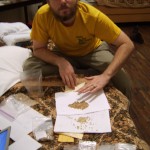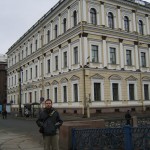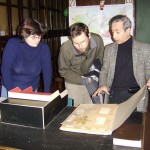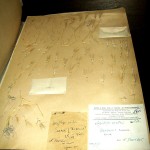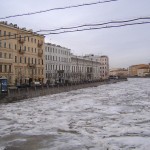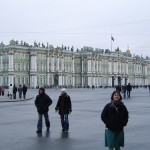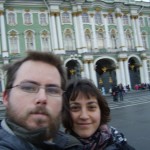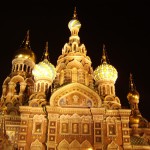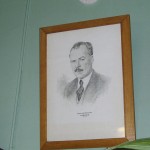The Vavilov Institute is located in two beautiful old buildings in the main part of St. Petersberg. We were told that the government does not believe the Institute needs to be located on such prime real estate (right next to the Hotel Astoria and other big-money hotels), and so they do not provide them with the funds to maintain the buildings.
Some of the space of at least one of the buildings is rented out to other businesses and this building, which houses the herbarium and some of the gene bank, as well as many offices, is in the course of renovation — the outside is complete but the inside has far to go. This is the building that we spent most of our time in — it houses Sergey’s office.
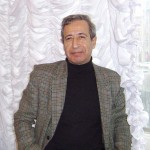
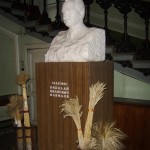
Left: Sergey Alexanian, our great host. Right: One of many Vavilov Statues.
We had the opportunity, though, to walk across a great traffic circle (the “backyard”) to the Institute’s building on the other side. This building was initially designed to be apartments for nobility (200+ years ago), and some of the interiors were reminiscent of the Hermitage, with gold plating on the walls and frescoes in the halls, and ornately carved ceilings throughout. This is where the Director of the Institute’s office lies, and also where the private Vavilov Museum is located. There are also two great halls capable of hosting at least 100 people for conferences and the like, and also many other offices that we did not see. Our tour of this building began with a walk around to see some of the more impressive rooms mentioned above.
Next we went to the private Vavilov Museum, which consists of several exhibits detailing the achievements of Vavilov as well as those of the Institute. There are maps depicting Vavilov’s Centers of Origin, and maps that show where he himself went on collecting missions over a 20-year period from the 19teens to 1940. The most impressive map, though, is the one that details all of the collecting missions that have been carried out by all staff of the Vavilov Institute over the past 100 years – this map is nearly all marked up, except for locations that are very far north. This is especially impressive when one considers the political situation with Russia for most of that time, and the financial situation now.
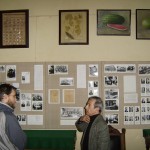
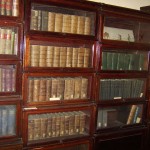
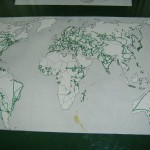
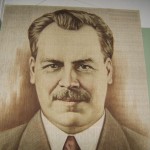
Photos from left to right: Sergey giving us the museum tour, books in Vavilov’s study, map of the institute’s collection missions, N.I. Vavilov.
